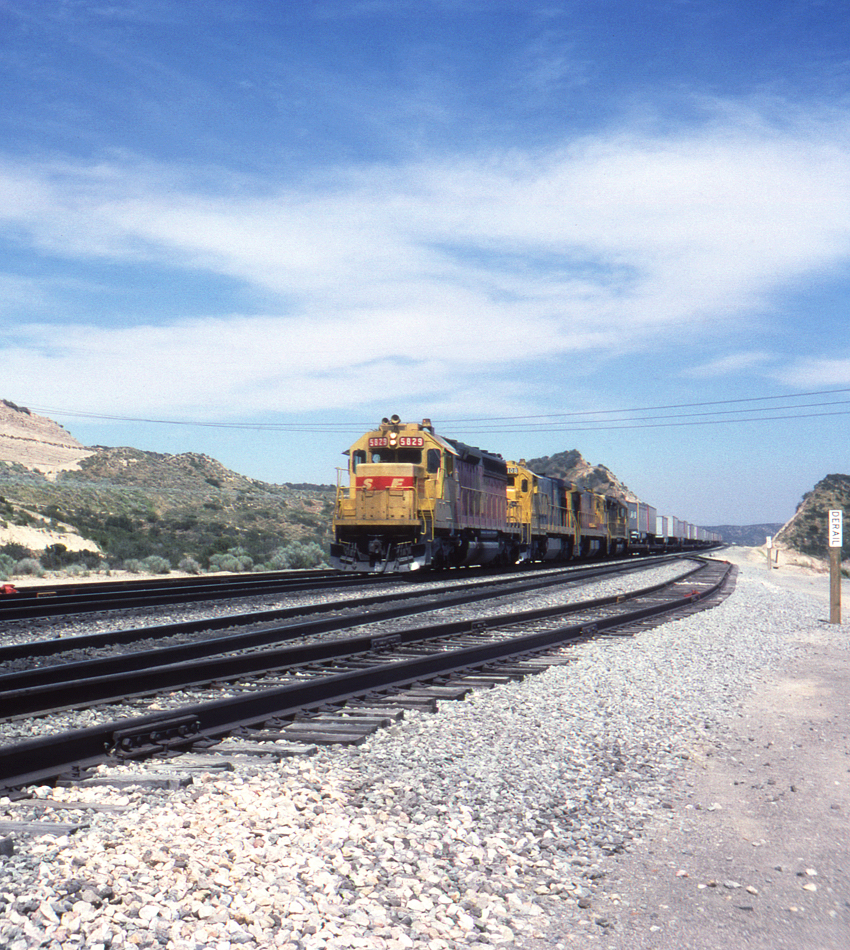

A westbound freight passes through Summit, bearing the "kodachrome" paint scheme intended for the ill-fated Santa Fe-Southern Pacific merger. And therein lies a tale.
In 1980 the Southern Pacific Railroad was in deep trouble. Its track was deteriorating, it had a severe locomotive shortage, and it had made a number of very bad investment decisions. About its only success story was its newly developed communication system, which evolved into SPRINT. Unfortunately SPRINT grew faster than the railroad could afford, and ultimately SP faced the choice of going even deeper into debt by sponsoring communications satellites or having SPRINT fall hopelessly behind its competitors. So SP sold SPRINT. SP did have huge California land holdings, some dating back to the land grant days, held by its subsidiary Southern Pacific Land Company.
Santa Fe, on the other hand, had long hauls, all the way to Chicago in fact. And Santa Fe was interested. Pretty soon the marriage announcements had been sent out, the application for merger submitted to the ICC, and a special holding company, the Santa Fe Southern Pacific Corporation (or SFSP) set up to own the two railroads and the land company. Both railroads even began to repaint their locomotives in an identical red and orange paint scheme, each lacking only the initials and name of the other railroad on each unit to be painted in after merger.
And then the ICC rejected the merger by a 4-1 vote.
Needless to say the railroads were stunned, and had to figure out how to unscramble everything.
To make a long story short, Ron Krebs, who had been president of the Southern Pacific during the merger negotiations, had since been named president of the SFSP holding company, which remember now owned both railroads. He was ordered by the ICC to sell one of the two railroads, and chose to sell the Southern Pacific. But--the SFSP, which was now for all practical purposes just the Santa Fe, still owned the land company.
So, ultimately, the Santa Fe came out far richer and the poor Southern Pacific ended up shorn of its assets and swallowed up by the much smaller Denver & Rio Grande, ultimately to be devoured by the voracious Union Pacific.